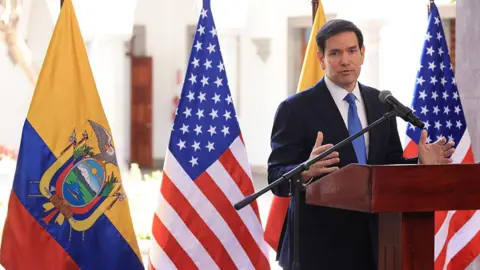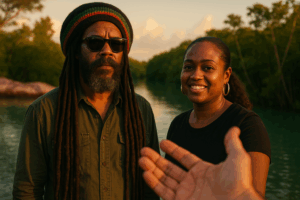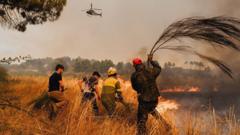Archaeologists in Peru have revealed the existence of a 3,500-year-old city, named Peñico, located in the northern Barranca province. This ancient settlement is thought to have played a significant role in connecting early communities along the Pacific coast with those from the Andes mountains and the Amazon basin. Situated approximately 200 kilometers north of Lima, Peñico rests at an elevation of around 600 meters (1,970 feet) and is believed to have been founded between 1,800 and 1,500 BC—coinciding with the rise of early civilizations in other parts of the world.
The discovery offers crucial insights into the fate of the Caral civilization, the oldest known civilization in the Americas, which emerged about 5,000 years ago in the Supe valley of Peru. An aerial view provided by researchers shows a circular structure at the center of Peñico, surrounded by numerous stone and mud buildings. Over a span of eight years, researchers excavated 18 structures, revealing ceremonial temples and residential areas.
Artifacts uncovered from the site include ceremonial objects, intricately crafted clay sculptures, and handmade necklaces adorned with beads and seashells. Dr. Ruth Shady, the archaeologist leading the research and who previously excavated Caral, emphasized the importance of this discovery in understanding the evolution of these ancient civilizations, particularly after the decline of Caral due to climate change.
According to archaeologist Marco Machacuay, a researcher affiliated with Peru's Ministry of Culture, the location of Peñico was strategically significant for trade and cultural exchange with nearby coastal and jungle societies. This finding is part of Peru's rich archaeological heritage, which boasts notable sites such as the Inca citadel of Machu Picchu and the enigmatic Nazca Lines etched into the desert.
Researchers continue to piece together the historical narrative of the Americas, with Peñico serving as a vital link that illustrates the interconnectedness of ancient societies.
The discovery offers crucial insights into the fate of the Caral civilization, the oldest known civilization in the Americas, which emerged about 5,000 years ago in the Supe valley of Peru. An aerial view provided by researchers shows a circular structure at the center of Peñico, surrounded by numerous stone and mud buildings. Over a span of eight years, researchers excavated 18 structures, revealing ceremonial temples and residential areas.
Artifacts uncovered from the site include ceremonial objects, intricately crafted clay sculptures, and handmade necklaces adorned with beads and seashells. Dr. Ruth Shady, the archaeologist leading the research and who previously excavated Caral, emphasized the importance of this discovery in understanding the evolution of these ancient civilizations, particularly after the decline of Caral due to climate change.
According to archaeologist Marco Machacuay, a researcher affiliated with Peru's Ministry of Culture, the location of Peñico was strategically significant for trade and cultural exchange with nearby coastal and jungle societies. This finding is part of Peru's rich archaeological heritage, which boasts notable sites such as the Inca citadel of Machu Picchu and the enigmatic Nazca Lines etched into the desert.
Researchers continue to piece together the historical narrative of the Americas, with Peñico serving as a vital link that illustrates the interconnectedness of ancient societies.



















